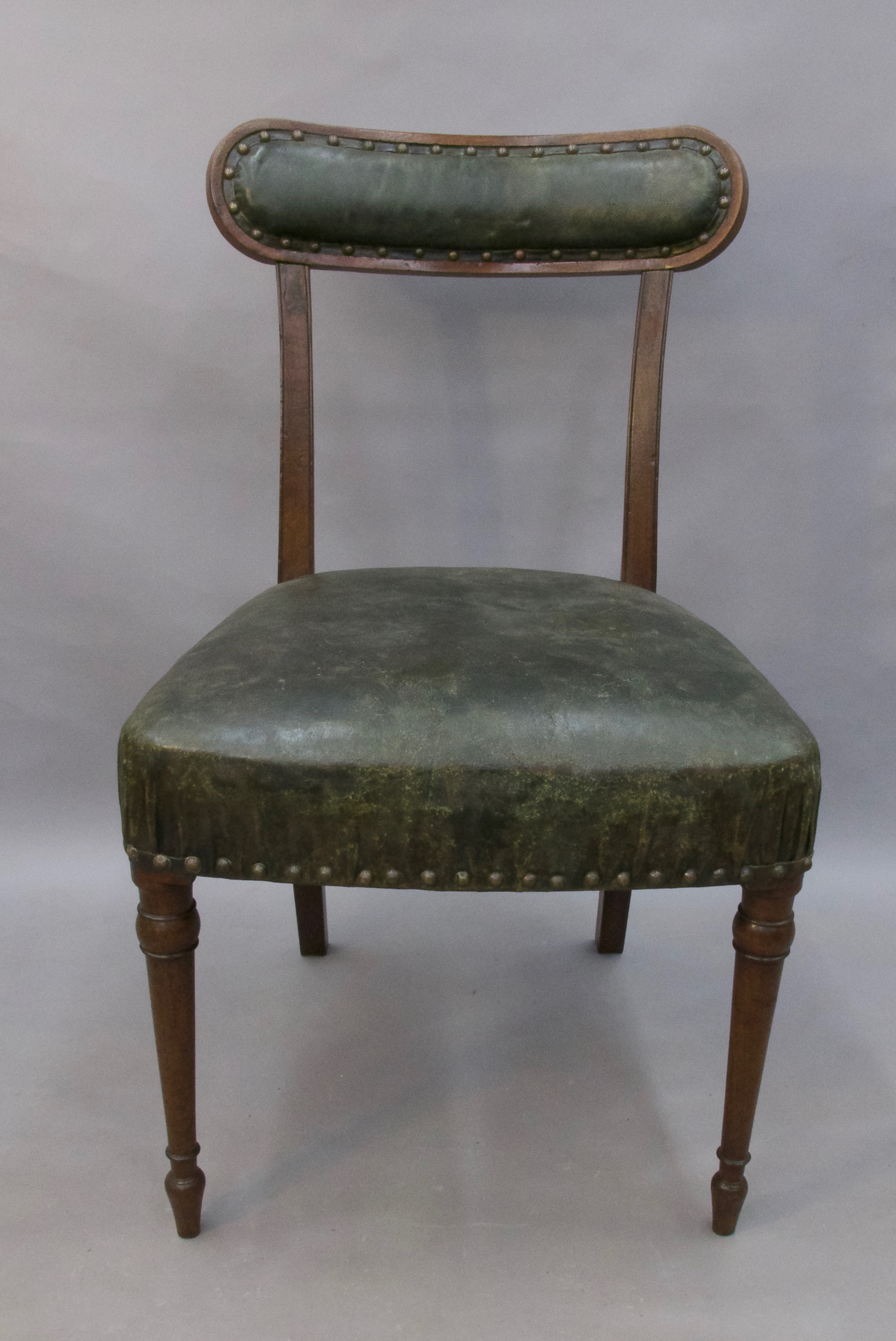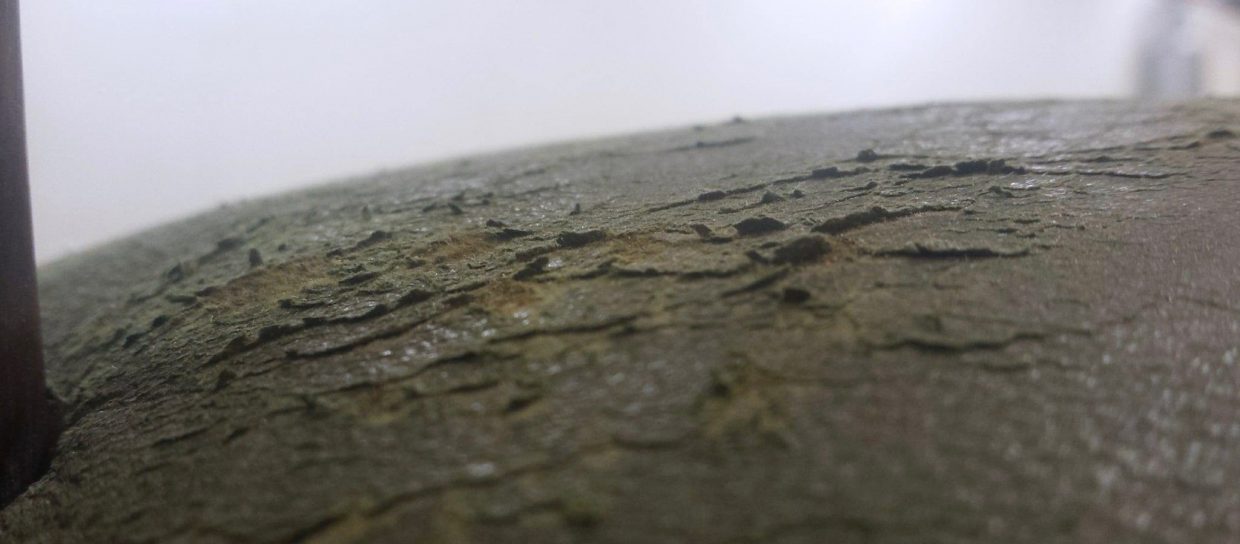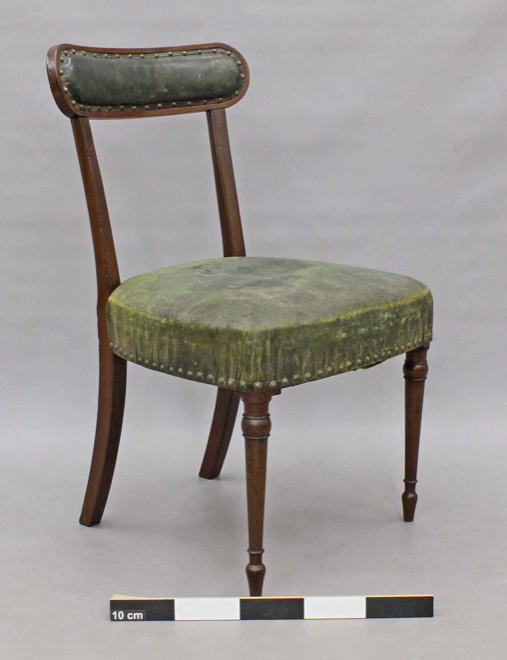
Leather chairs and book conservation. There may not be an apparent natural connection between the two, but leather is leather, and the techniques used to conserve the leather of a book can be adapted and applied to the leather of a chair.
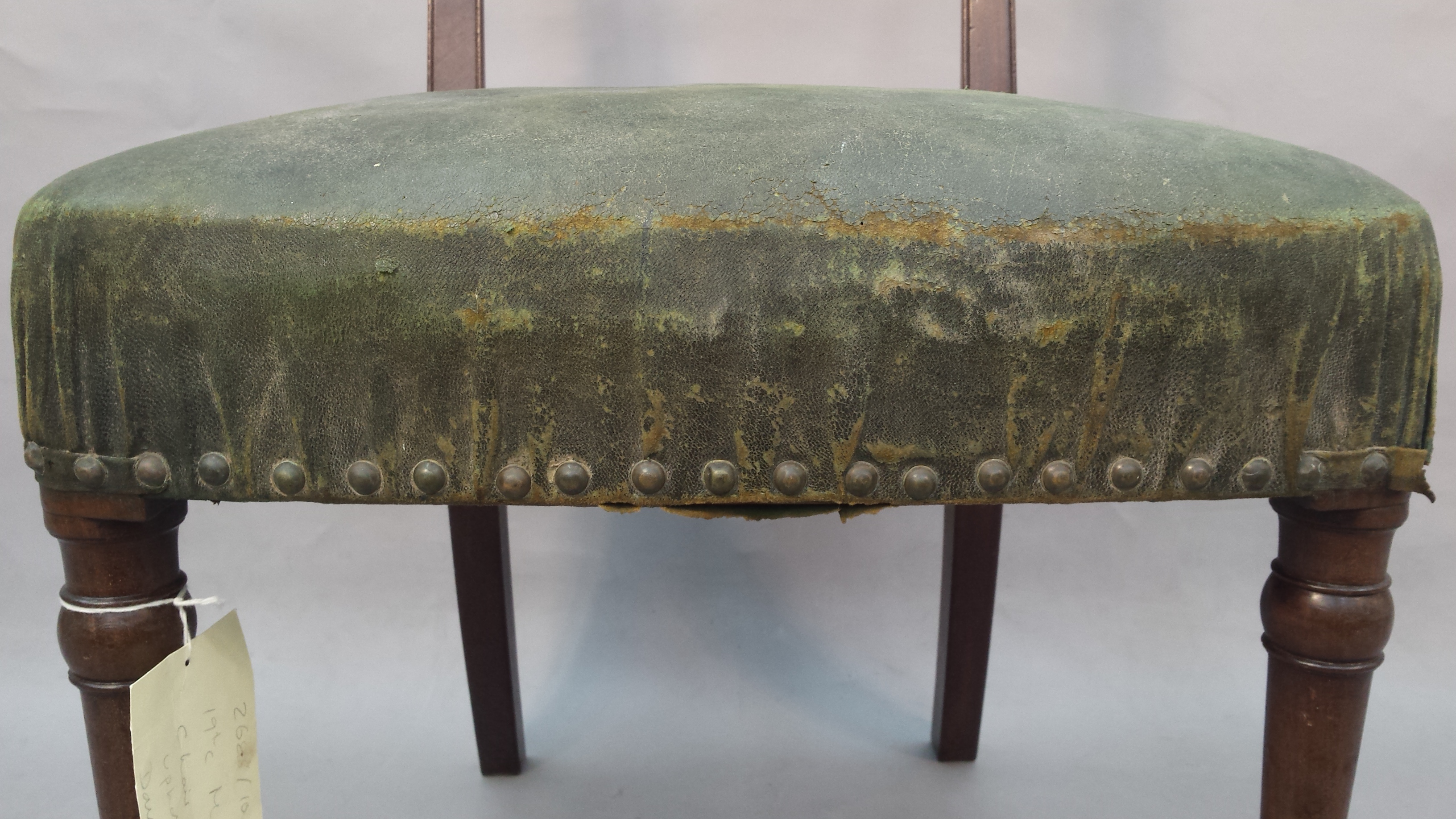
This Victorian dining chair was found in an old workshop where it was subjected to dust, damage, and mystery stains. The leather upholstered seat and backrest were surface cleaned with a combination of vacuuming, smoke sponges and white spirits before the build-up around the brass nails was carefully scrapped away.
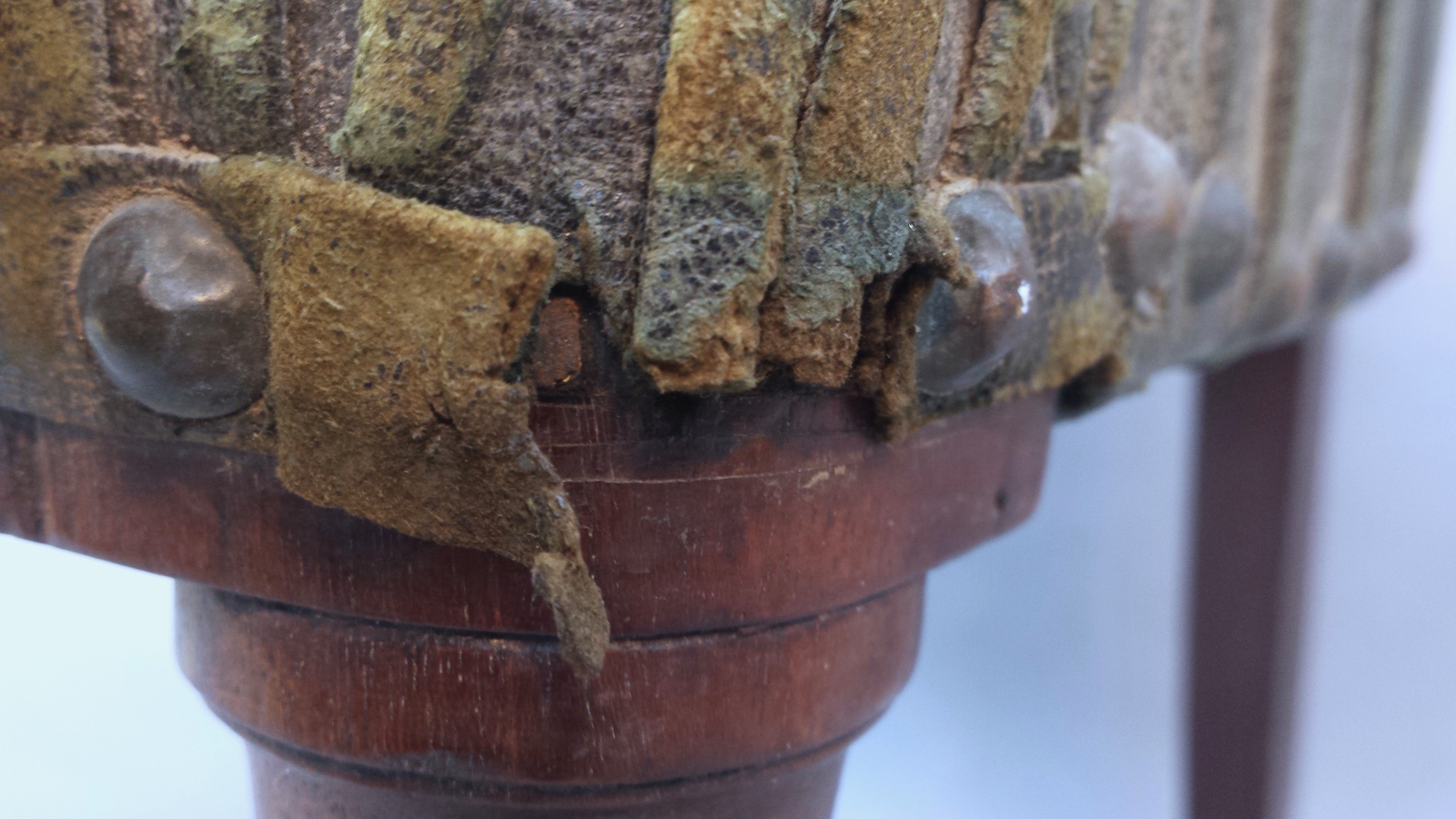
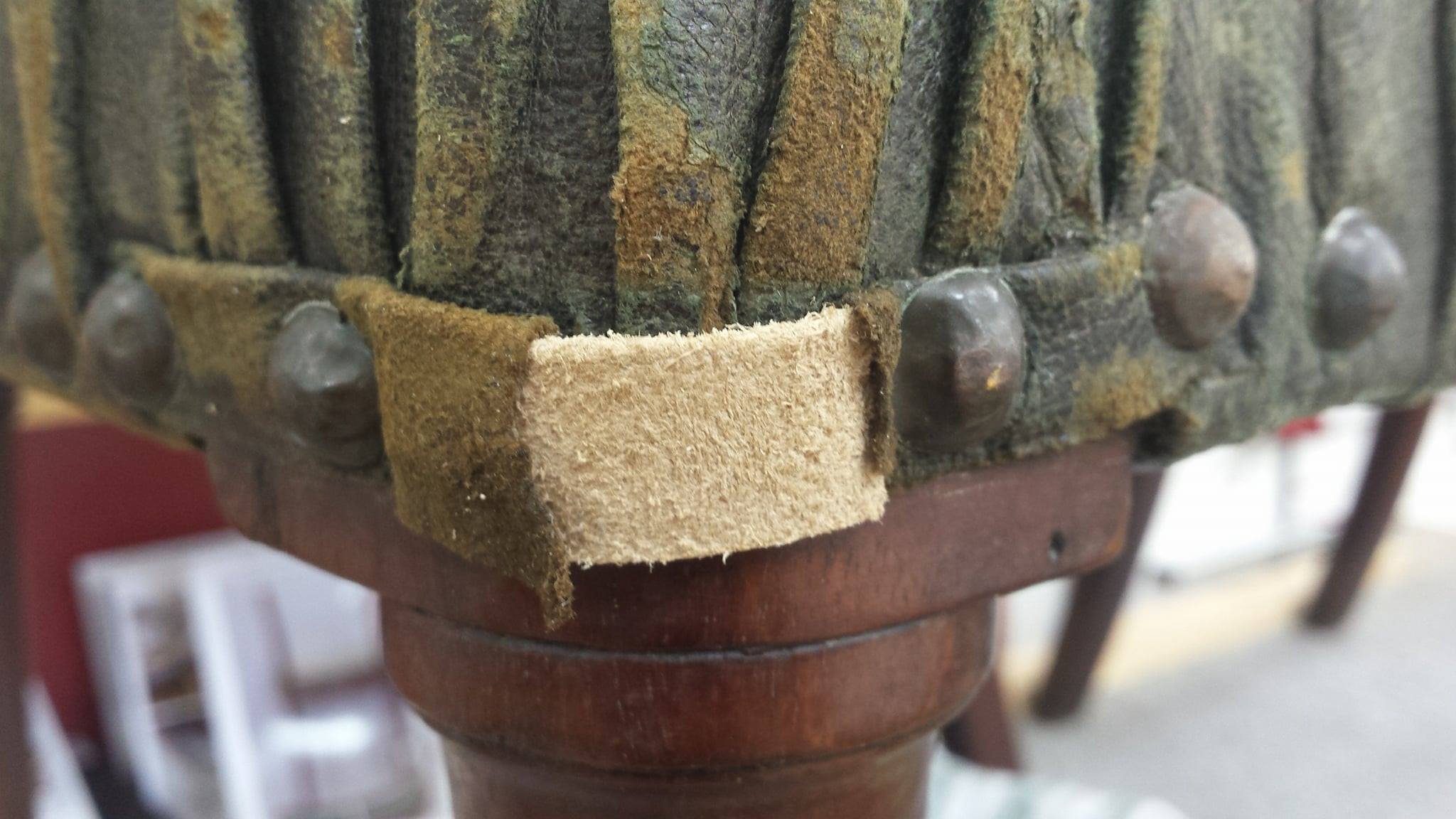

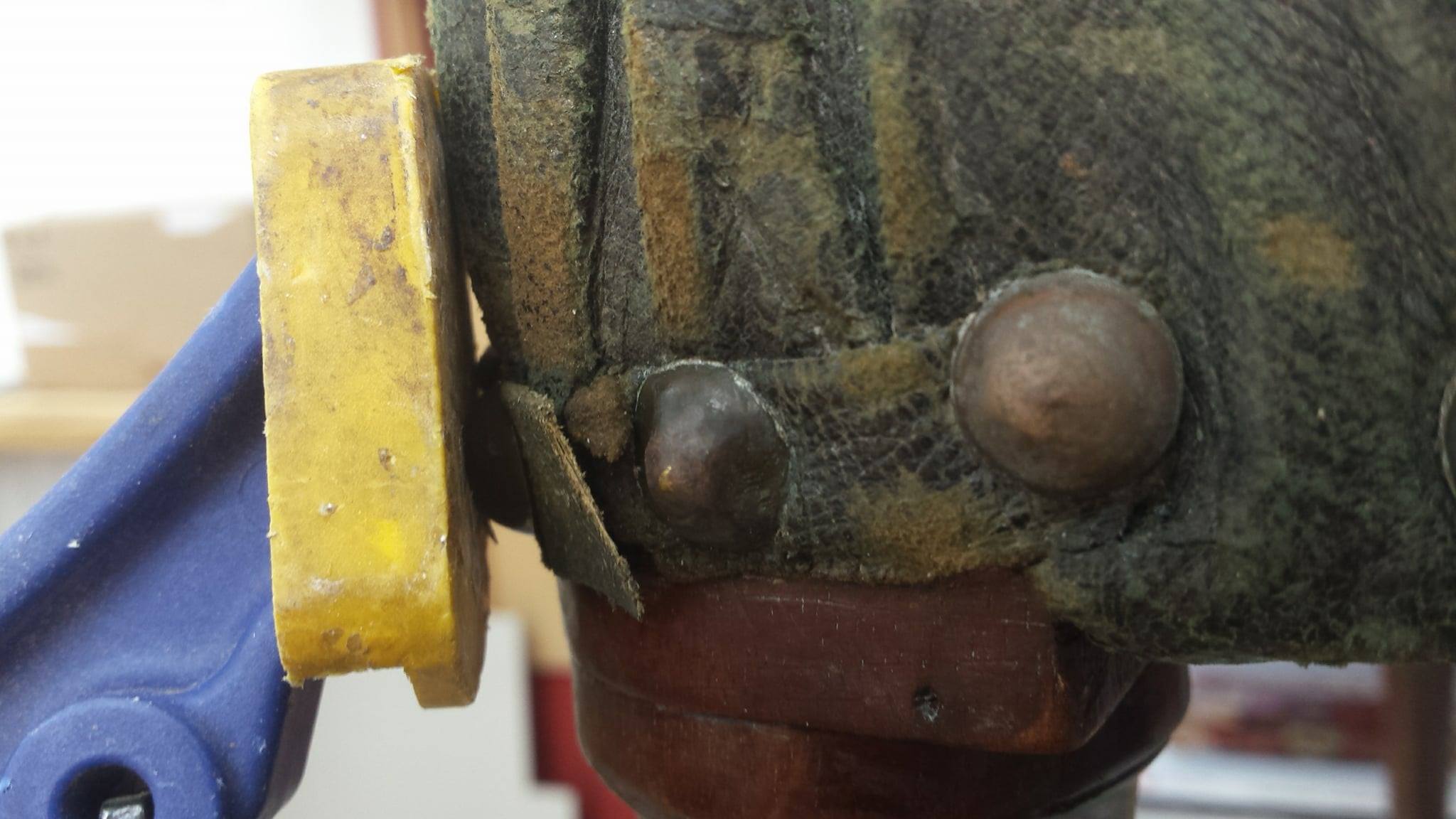
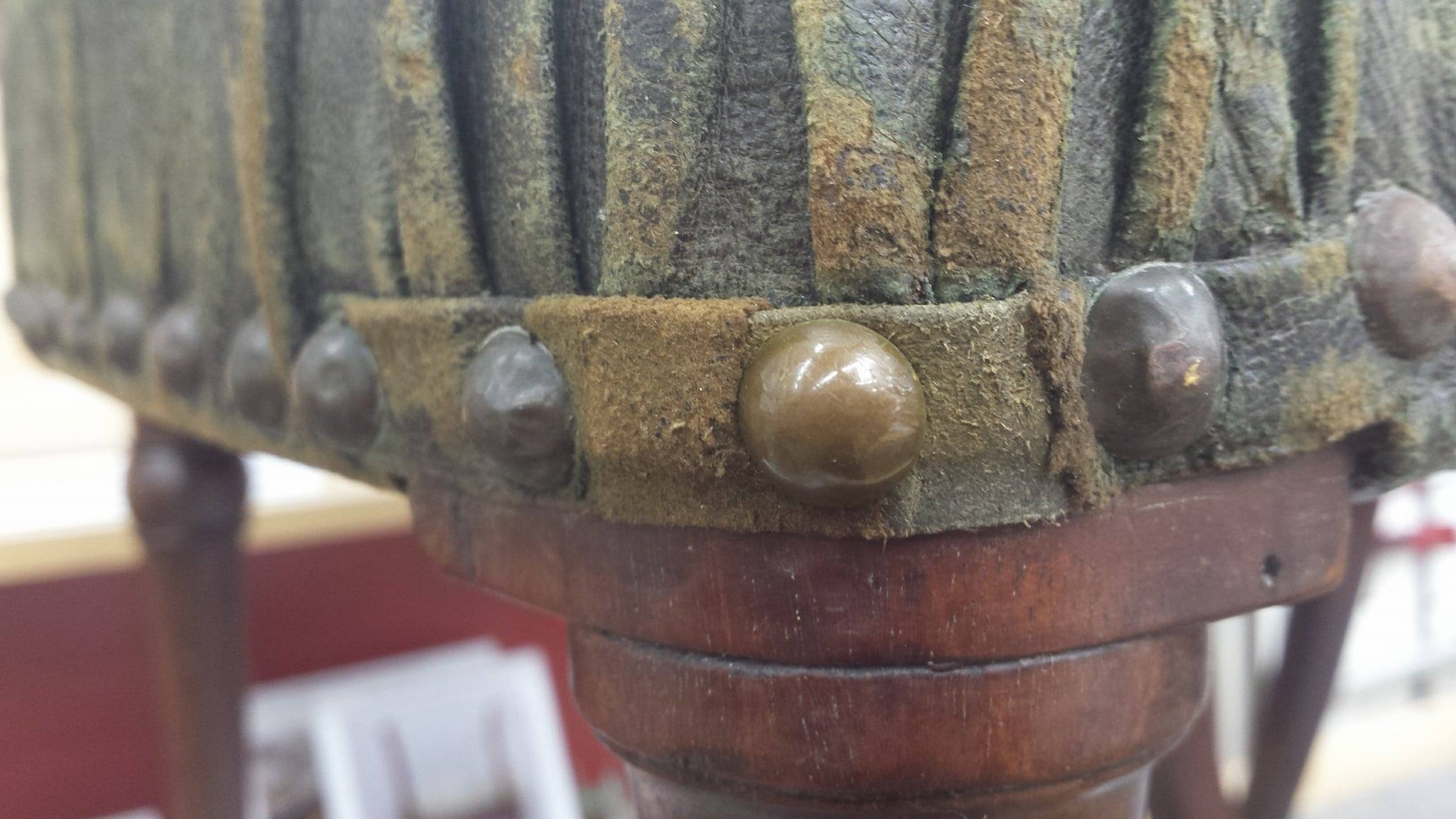
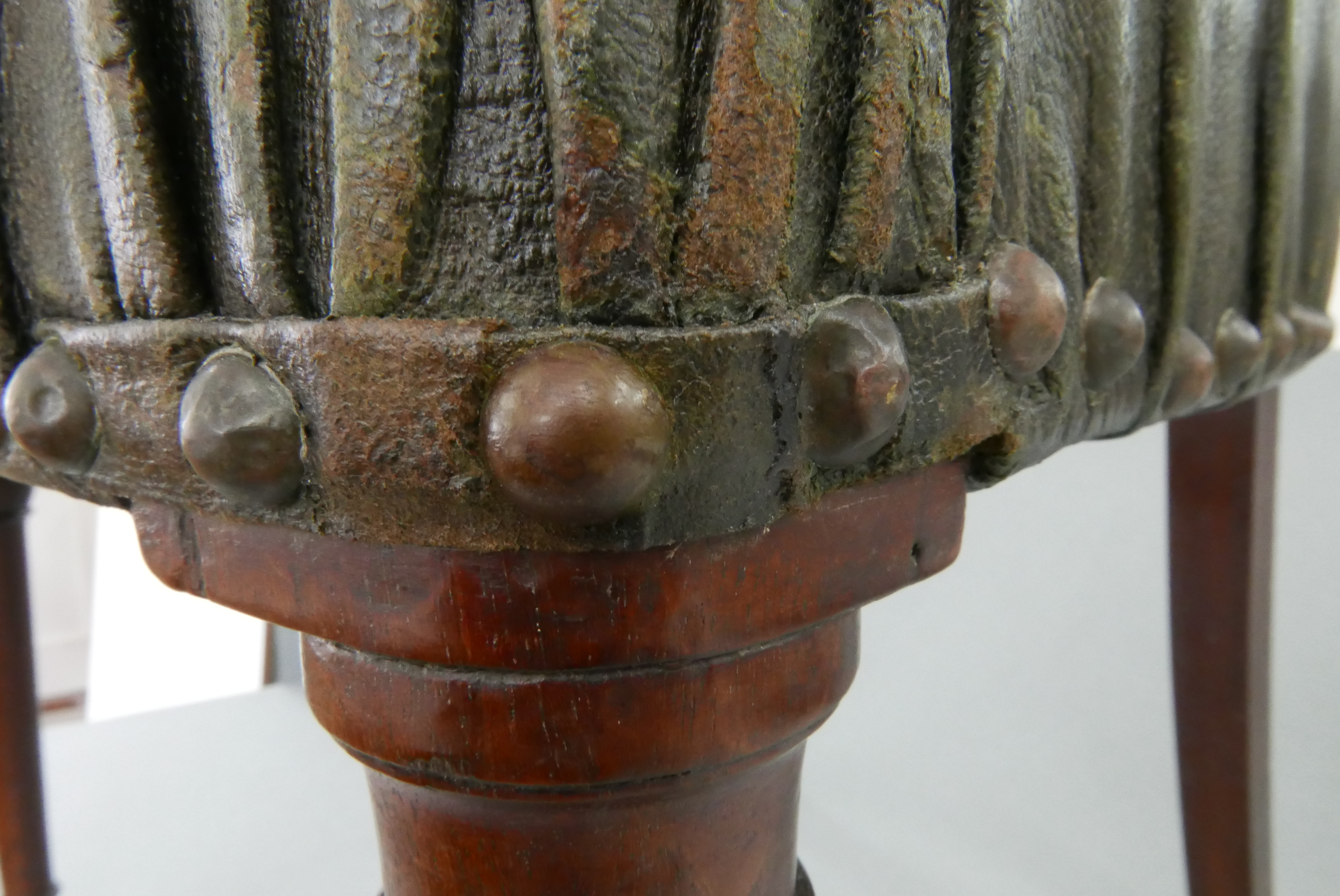 A copper nail and segment of leather trim from the front left corner needed replacing. A strip of archival calf leather was trimmed and pared to beyond the length of the missing piece of trim. It was folded in half with the flesh side out—to match the texture of the surrounding leather–and a strip of non-woven polyethylene fabric was placed in the middle of the fold for added strength without added bulk. The leather was toned with watercolor and the right side was adhered to the inside of the existing trim with a 50/50 mixture of 360 and 498 Lascaux. The leather strip was secured in place with a new brass nail. The nail was gently pressed into the original nail hole with a furniture clamp. The left edge was then adhered to the inside of the existing trim and the new nail was patinated to blend in with the others. A thin coating of SC6000 (an acrylic wax emulsion) was applied to the seat and trim once all treatments were completed.
A copper nail and segment of leather trim from the front left corner needed replacing. A strip of archival calf leather was trimmed and pared to beyond the length of the missing piece of trim. It was folded in half with the flesh side out—to match the texture of the surrounding leather–and a strip of non-woven polyethylene fabric was placed in the middle of the fold for added strength without added bulk. The leather was toned with watercolor and the right side was adhered to the inside of the existing trim with a 50/50 mixture of 360 and 498 Lascaux. The leather strip was secured in place with a new brass nail. The nail was gently pressed into the original nail hole with a furniture clamp. The left edge was then adhered to the inside of the existing trim and the new nail was patinated to blend in with the others. A thin coating of SC6000 (an acrylic wax emulsion) was applied to the seat and trim once all treatments were completed.
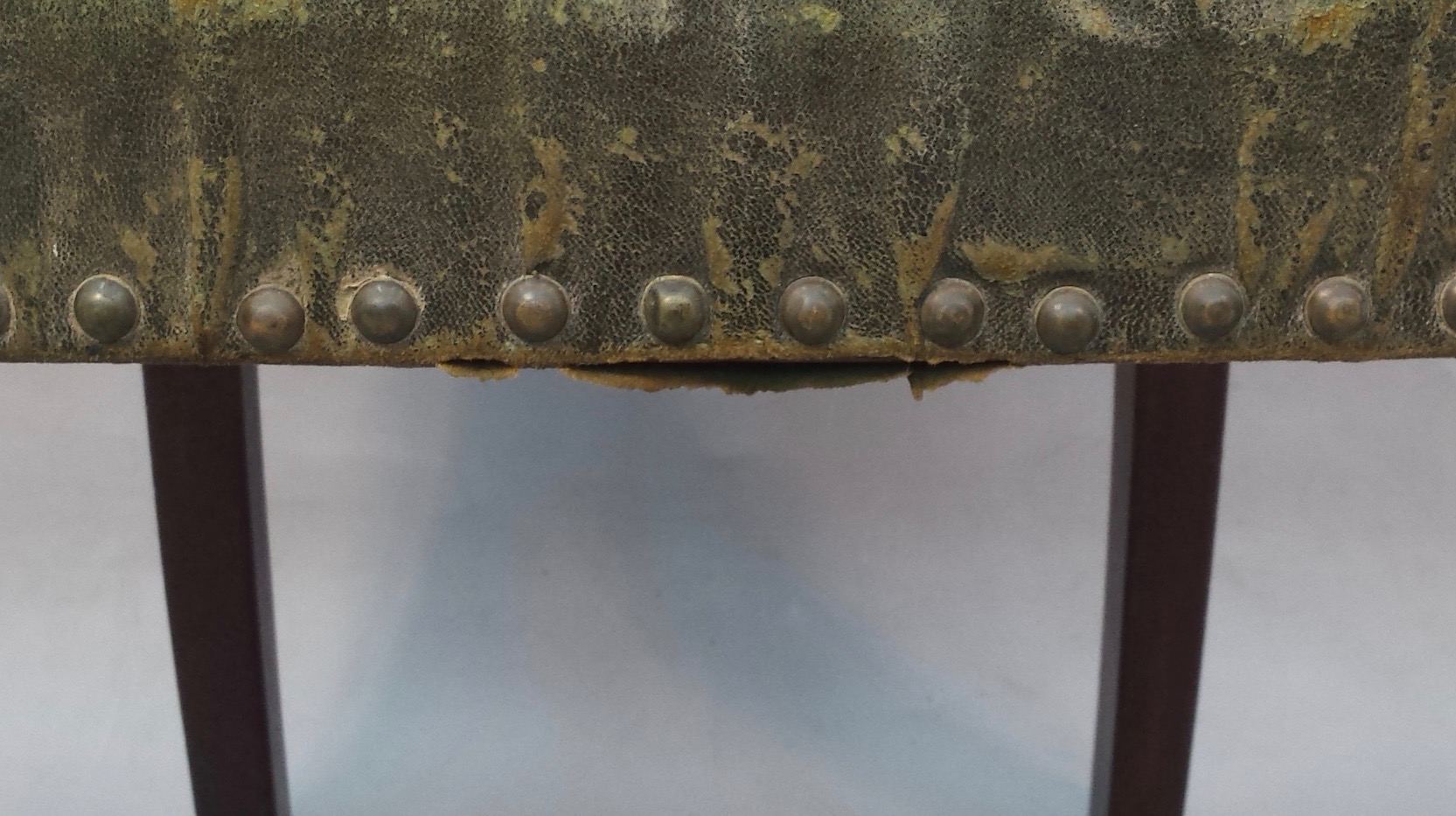
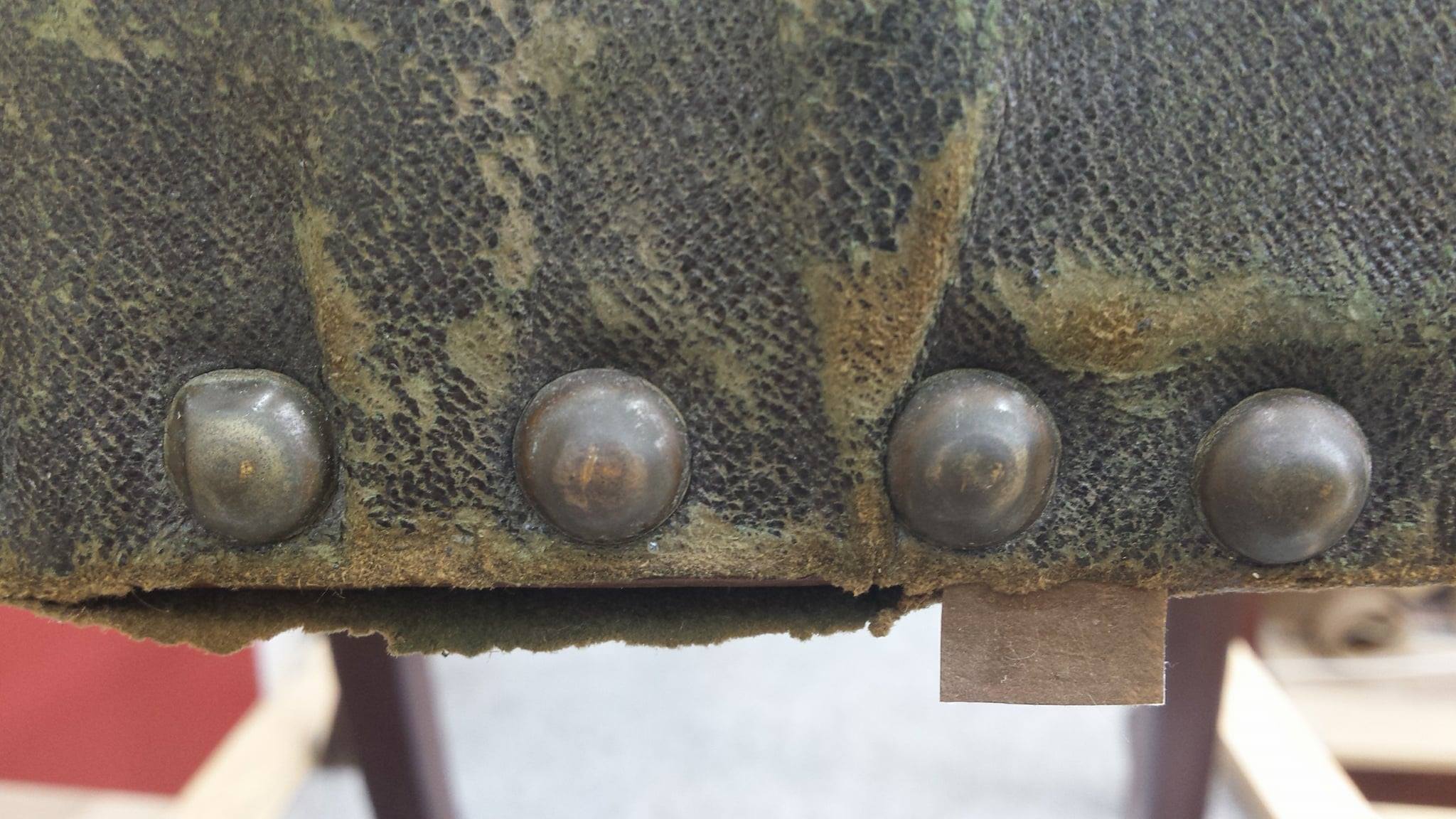
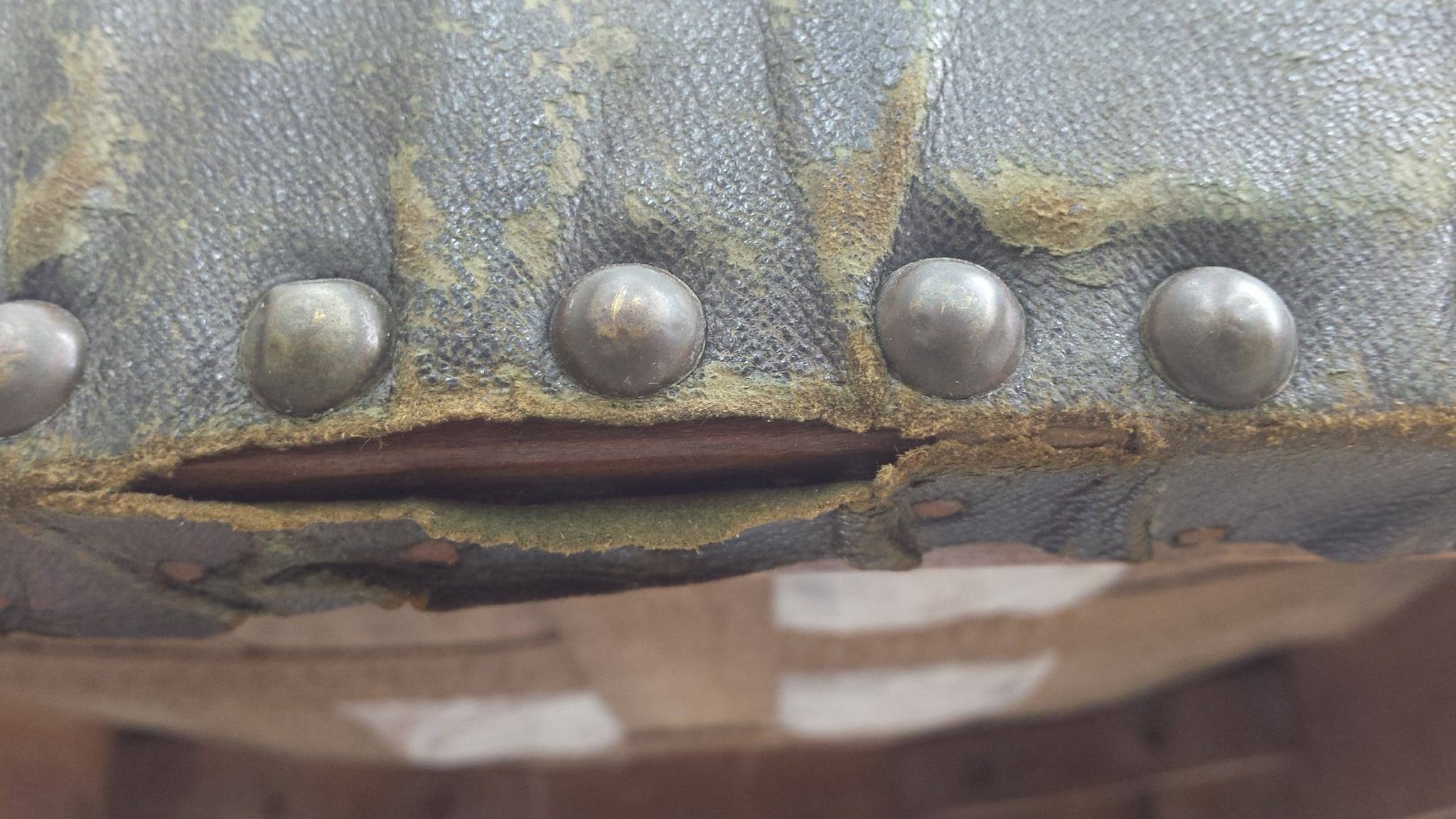
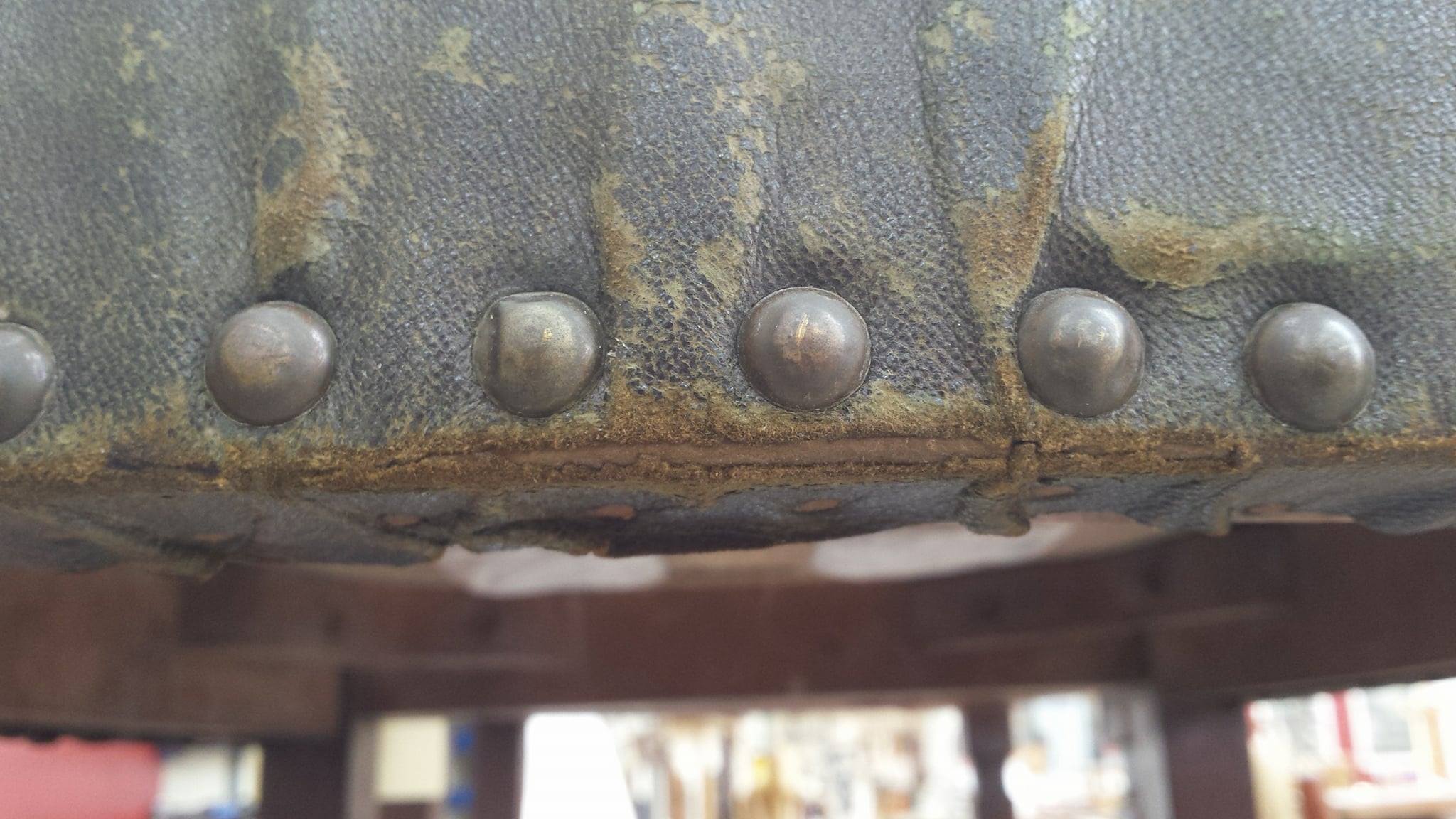
A split along the bottom front rail was repaired with Japanese paper laminated with the same non-woven polyethylene fabric. The Japanese paper was toned to match the split edge of the leather before being adhered to the non-woven fabric with Evacon. Again, the fabric adds strength while keeping the repair material as thin as possible. It also prevents the Lascaux mixture, the adhesive used to attach the repair material to the leather, from seeping through to the wooden rail. The split was repaired with two patches: it was not possible to do it all in one patch because of how tightly the leather on the left was nailed to the rail.
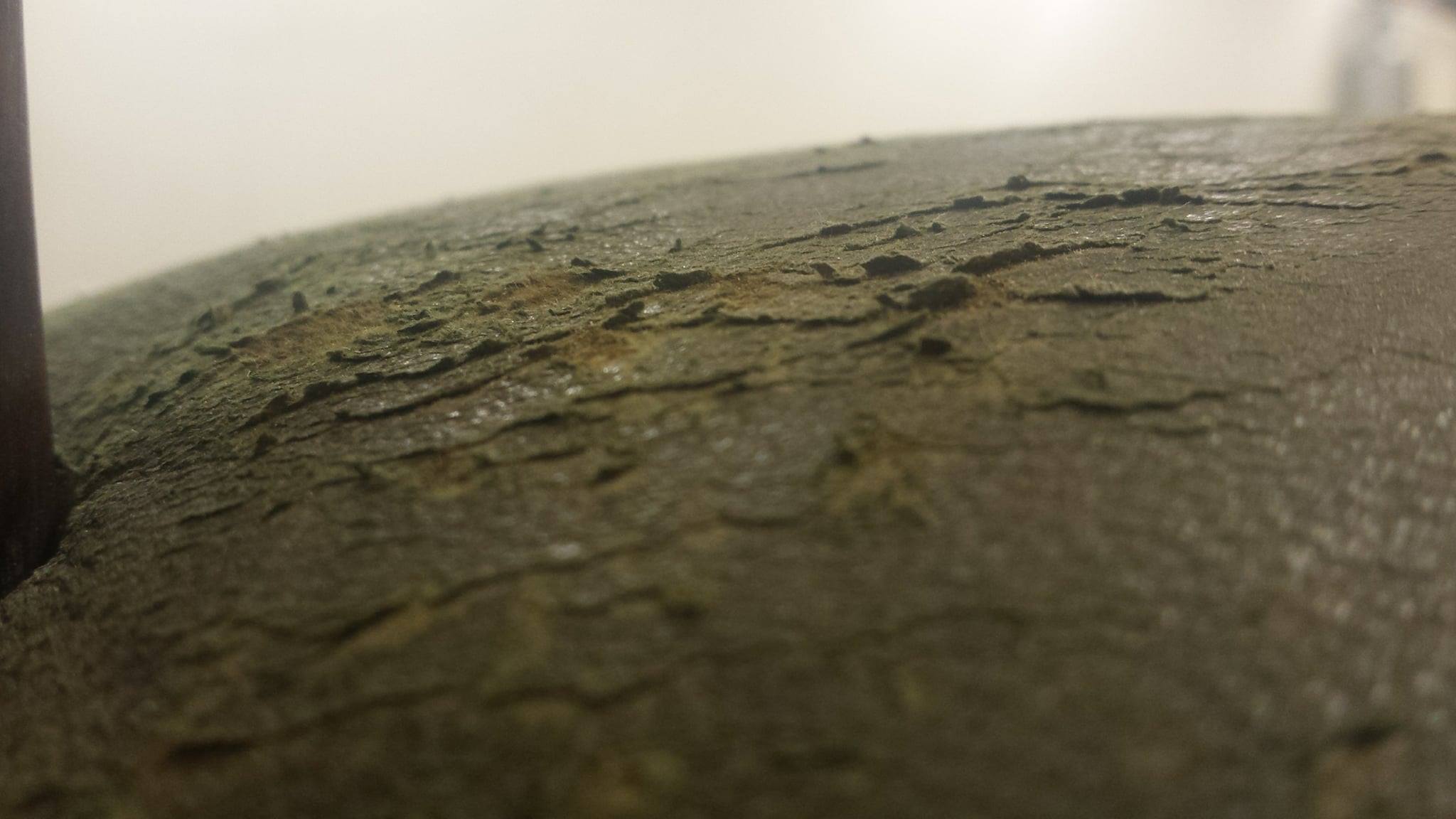
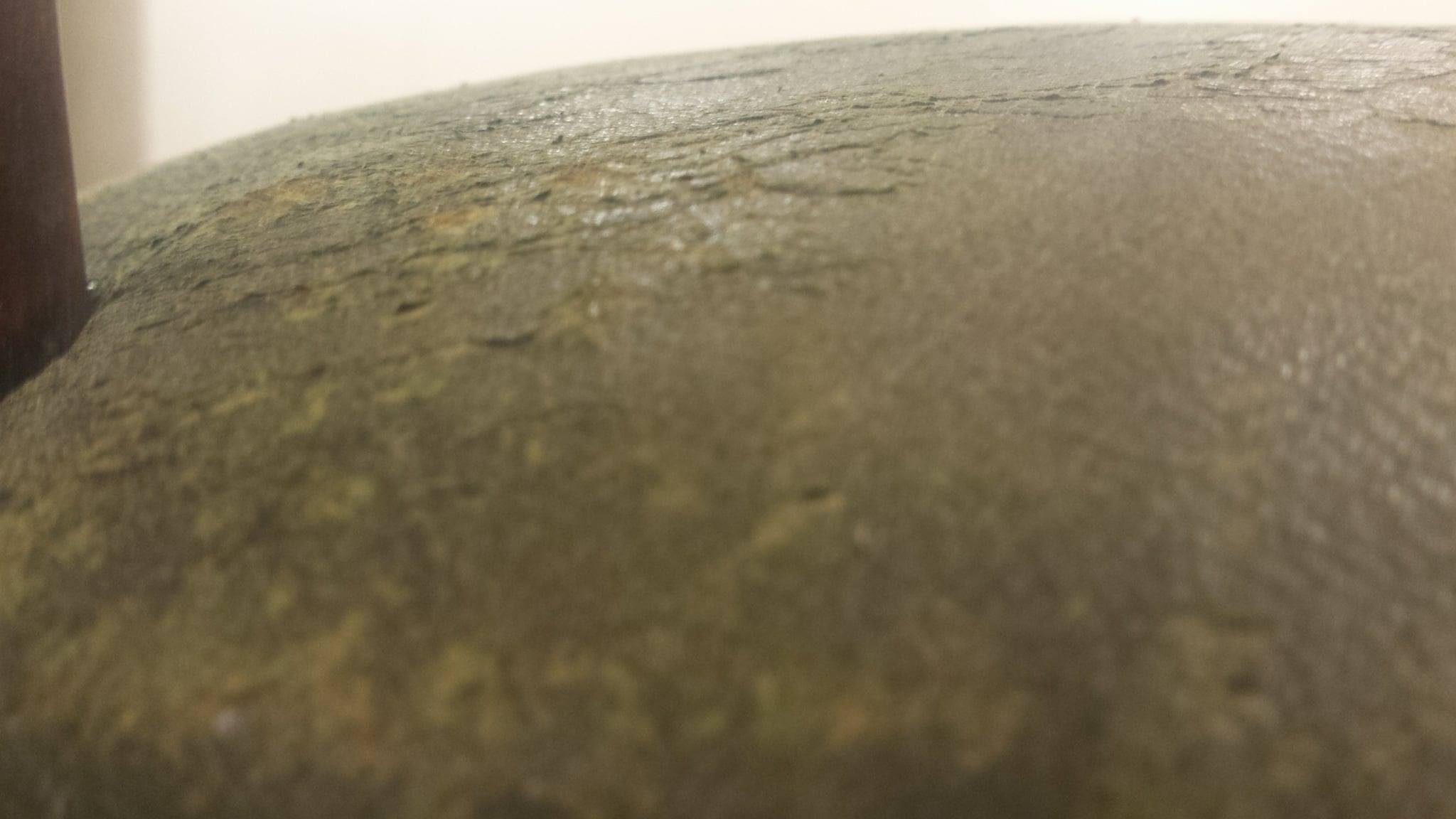
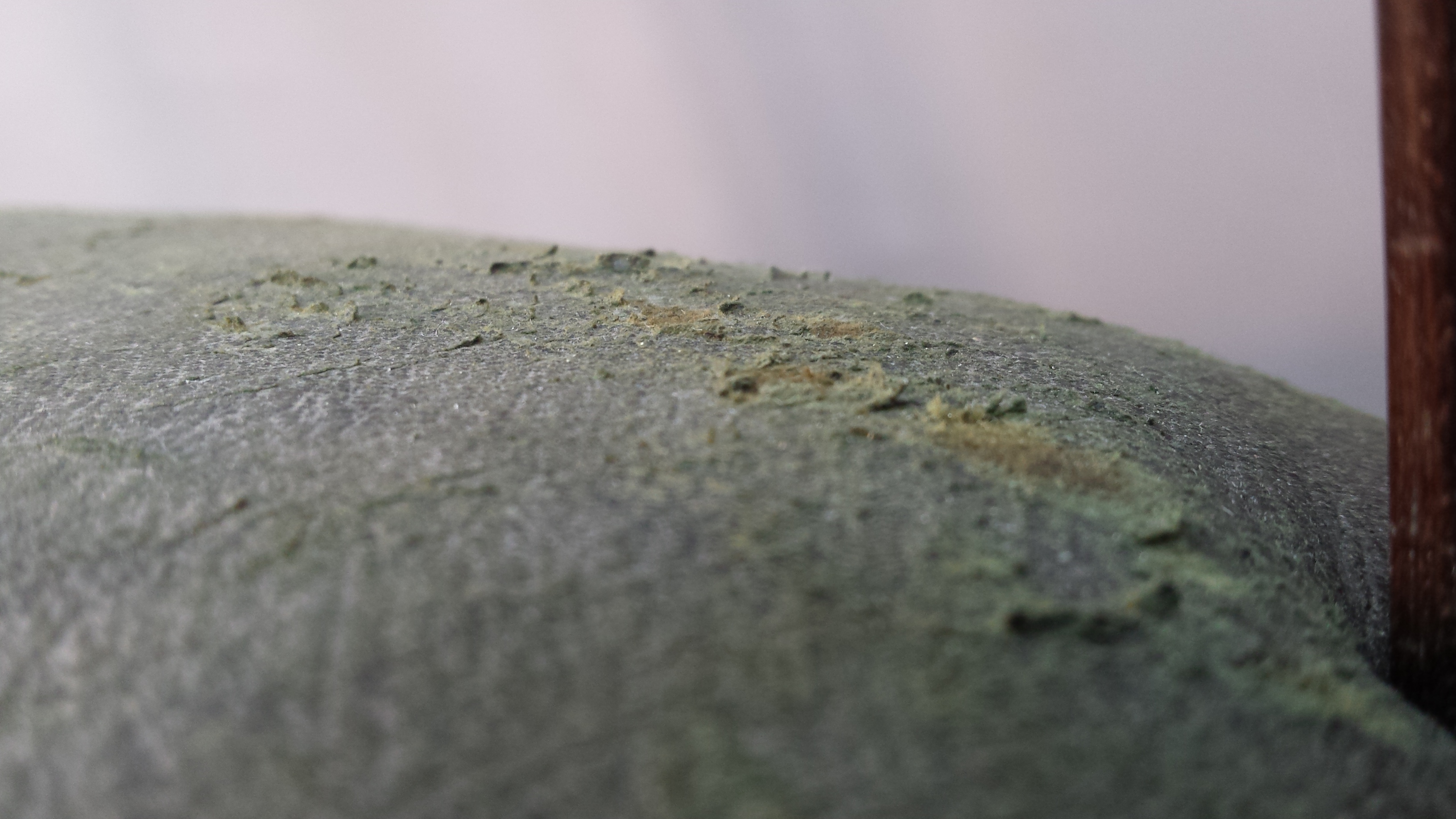
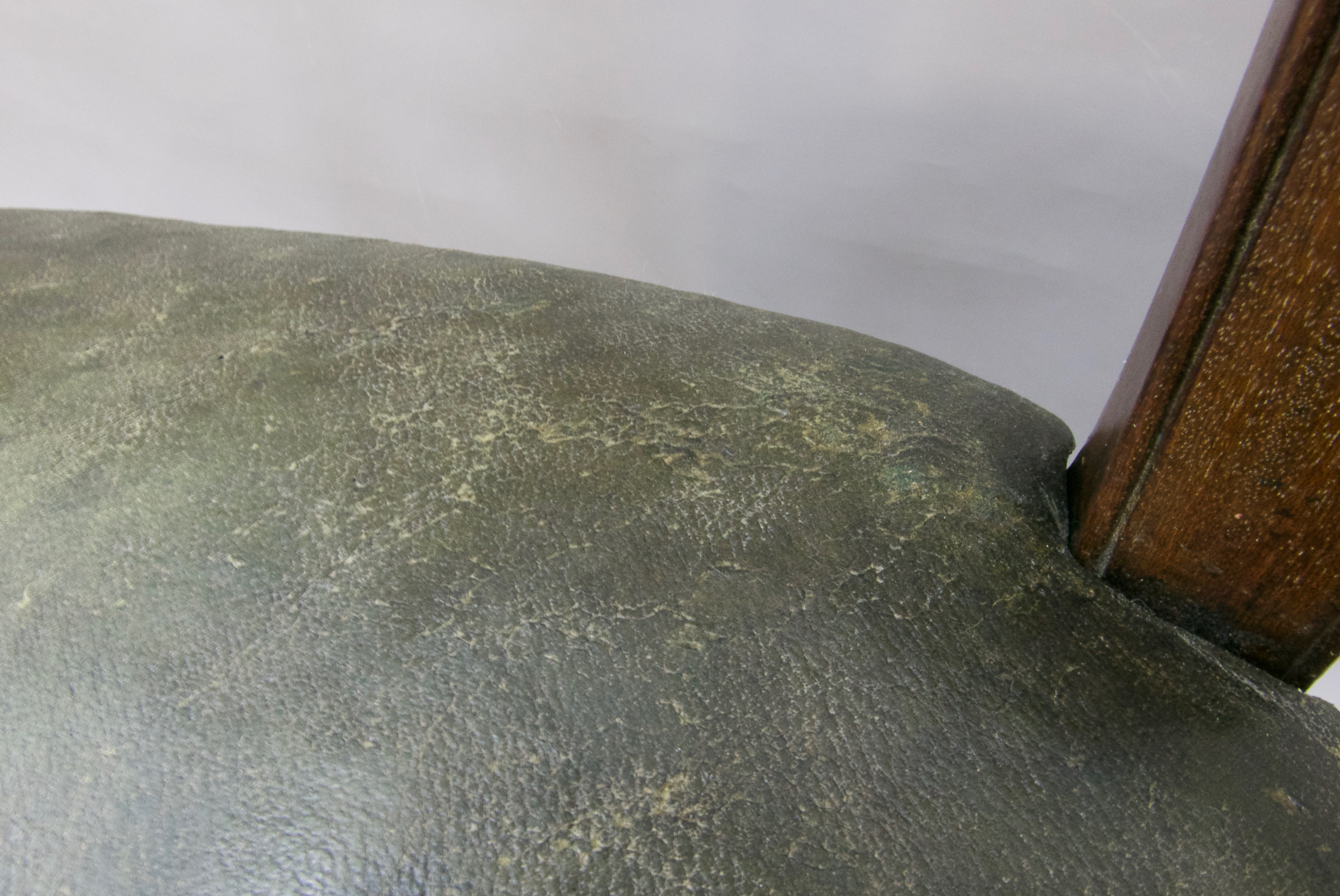
The leather’s grain layer was lifting badly, particularly along the top edges of the seat. These were consolidated using the same mixture of Lascaux. To do this, a minimal amount of the mixture was applied to the underside of the lifting areas with a micro spatula. The leather was smoothed into place with a clean silicon artist’s paint smugger. The technique held the leather in place while the adhesive set without marking the delicate leather in any way, and the adhesive did not stick to the silicon.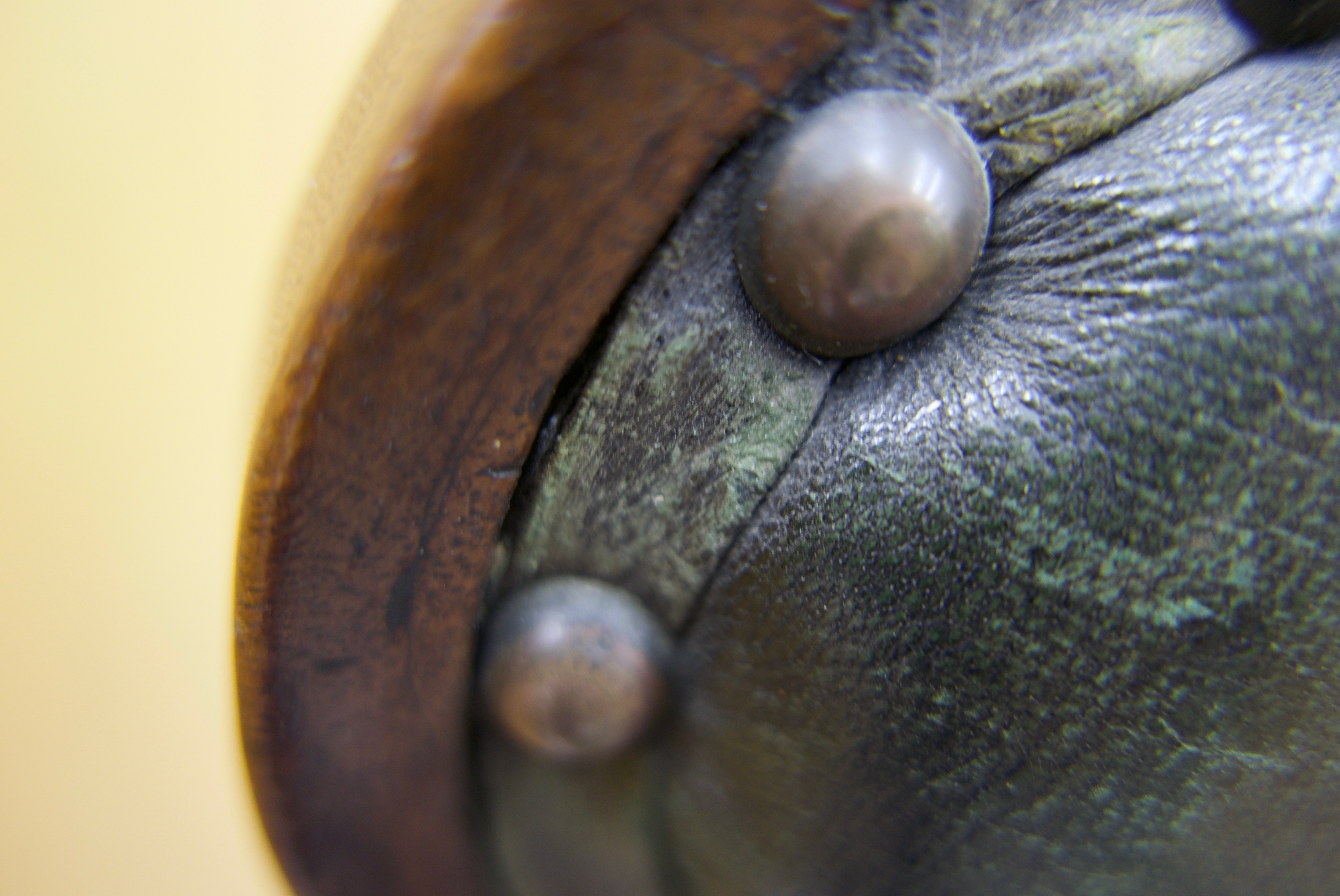
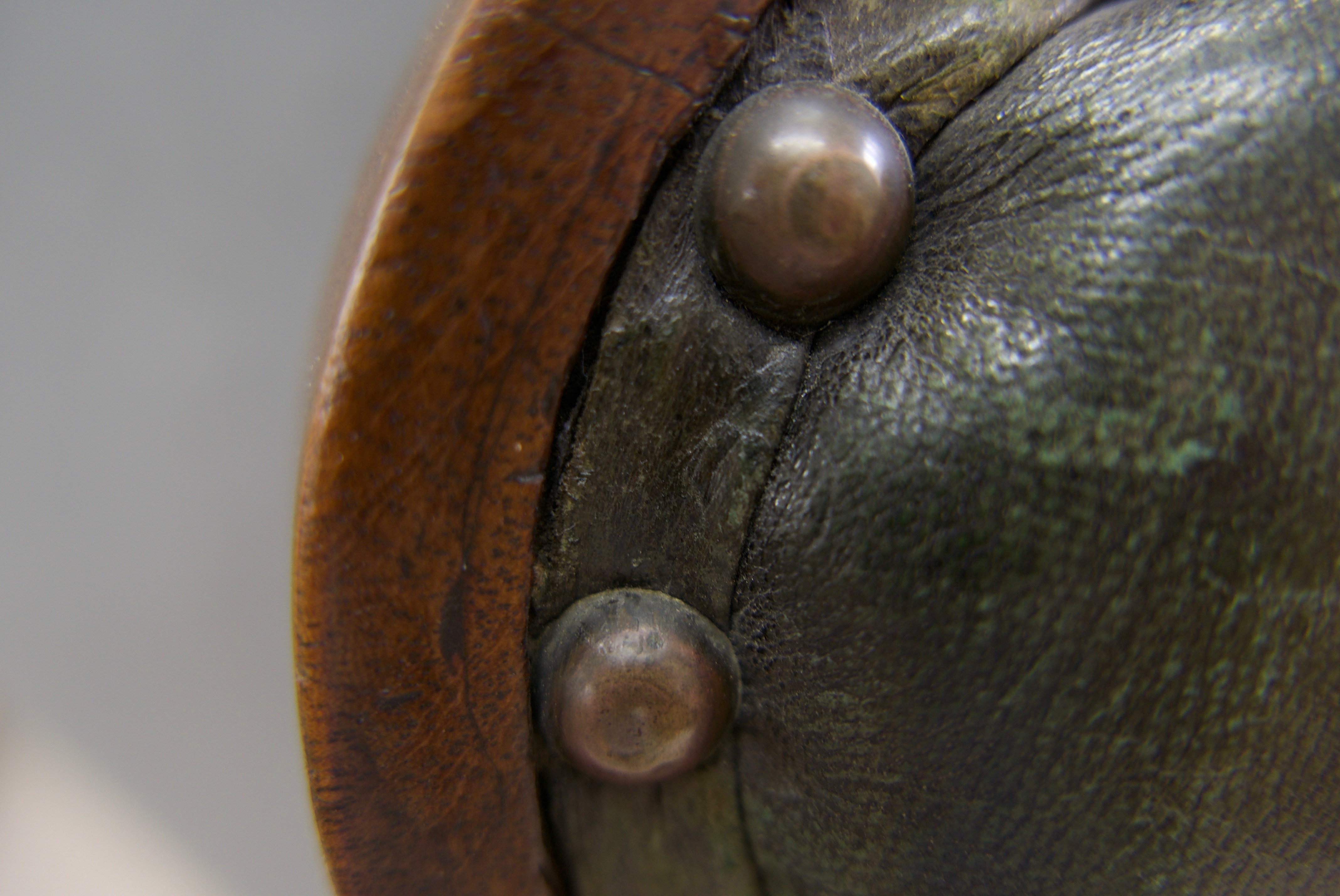
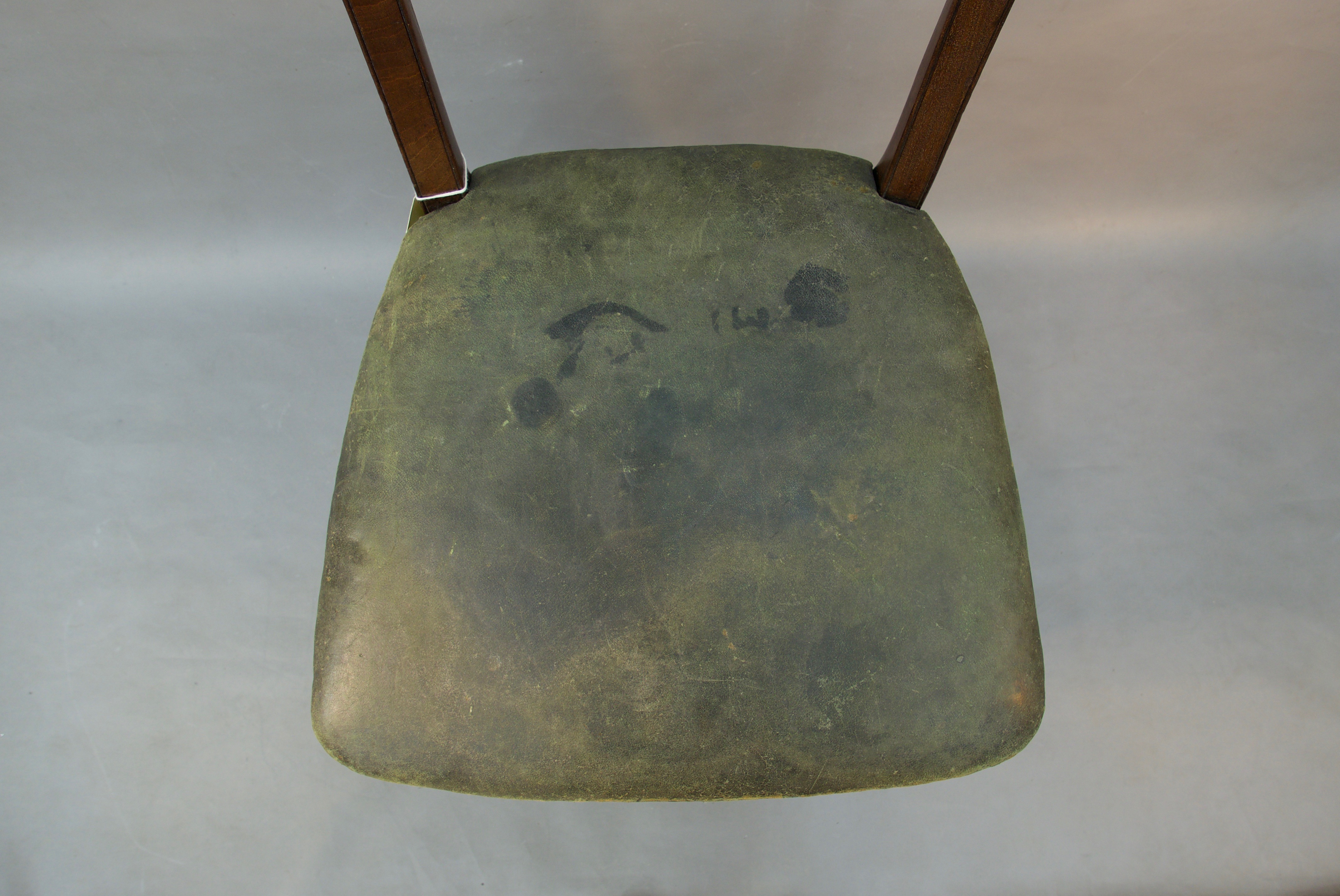
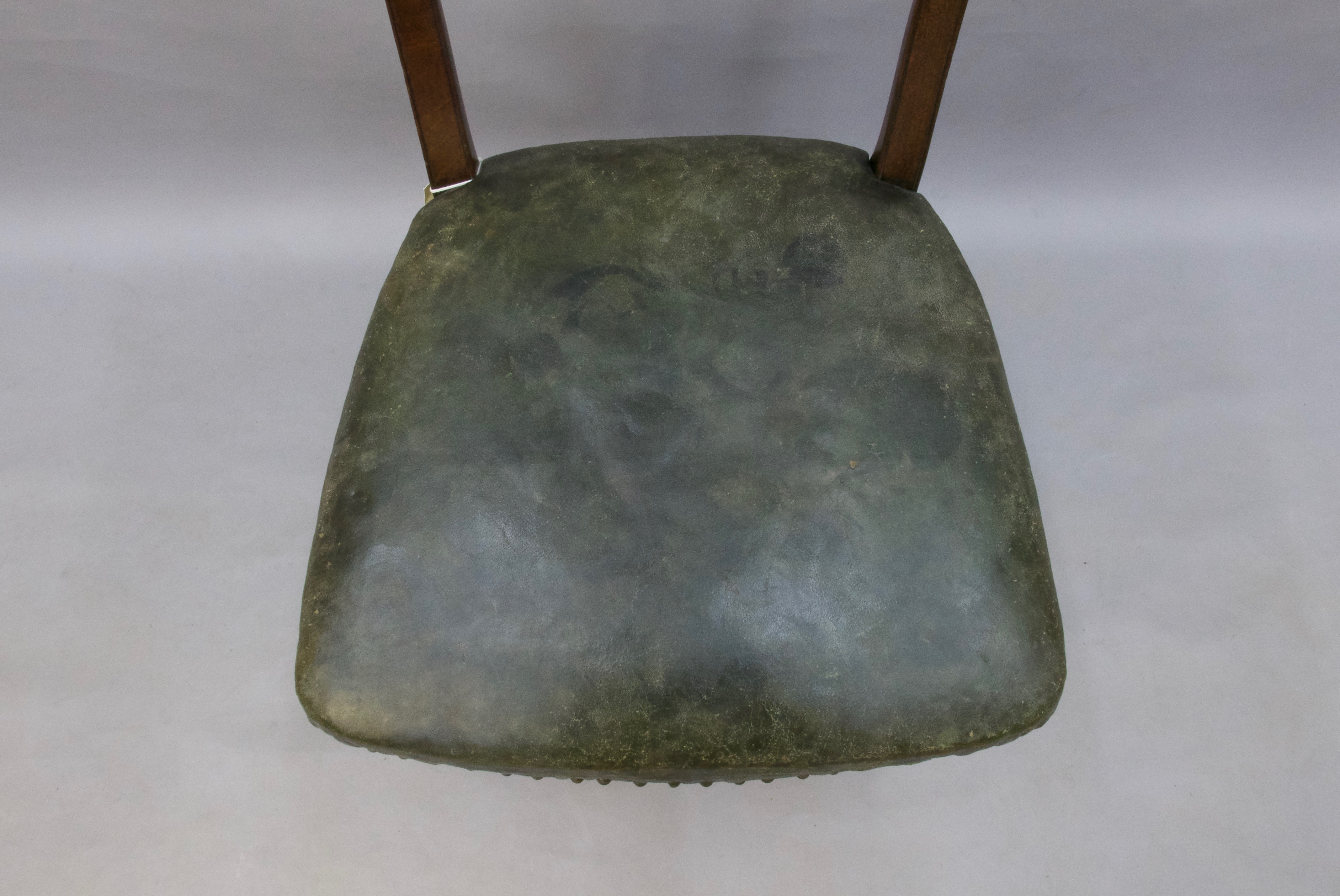 A thin layer of SC6000 was applied to the leather once all repairs were completed. The SC6000 functions to match the shine of the seat leather to that of the backrest and to form a protective layer over the grain layer.
A thin layer of SC6000 was applied to the leather once all repairs were completed. The SC6000 functions to match the shine of the seat leather to that of the backrest and to form a protective layer over the grain layer.
